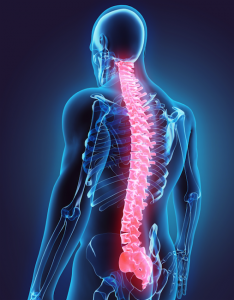MEDIAL BRANCH BLOCKS (MBB) To Diagnose Facet Joint Pain
Facet joints and the medial nerve branch
Many people are aware of the discs between levels of the spine, but many are unaware that cartilage lined joints exist on the bony projections that come off the spine. Many levels of the spine contain two facet joints between themselves and the level resting on them. The facet joints exist as mirror images along the midline of the spine with most levels of the spine having four total cartilage lined facet joints. Nerve roots exit the spinal cord from the foraminal canals directly next to the facet joints. Part of the nerve that innervates off the spine form the medial branch which rests along the facet joints. Inflamed and arthritic facet joints transmit pain to your brain through the medial branch. Patients suffering from facet joint pain can have their diagnosis confirmed with a diagnostic test known as a Medial Branch Block.
Facet Joint Pain Symptoms
Facet joint pain presents differently from the radiating pain of sciatica, lumbago, herniated discs, and foraminal stenosis. Facet joint pain may come and go with aggravating motions such as bending the spine backwards, but not forwards, or sitting down for long periods of time. The pain mostly will stay localized and possibly radiate horizontally along the back, such as out and over the shoulder blades, but not down into the arms and hands. Local muscles may react with a guarding reflex when pressed on. A guarding reflex causes the body to retreat away from pain by tightening the muscles reflexively. Facet joint pain in the lower back may present with pain that can travel down in the buttock or even slightly into the top the backside of the leg.
Medial Branch Block (MBB) as a diagnostic tool
A diagnostic injection called a medial branch nerve block, or MBB, confirms the source of pain at the facet joint. The medial branch nerve sends a pain signal from the facet joint (the connection point between two vertebrae in the spine). The procedure consists of the physician locally anesthetizing the area, inserting a needle into the general area of the facet joint above the nerve under fluoroscope guidance, and injecting a small amount of anesthetic with a little corticosteroid. The anesthetic works to interrupt the pain signal transmission. If the source of your pain sources from the facet, you should experience rapid pain relief after the procedure. If a medial branch block successfully relieves pain, identifying the facet as the source, your physician may recommend long term treatment such as Radiofrequency Ablation of the effected nerve.
Suspecting Facet Joint Pain? Ask if a Medial Branch Block is right for you! 817-375-5200



